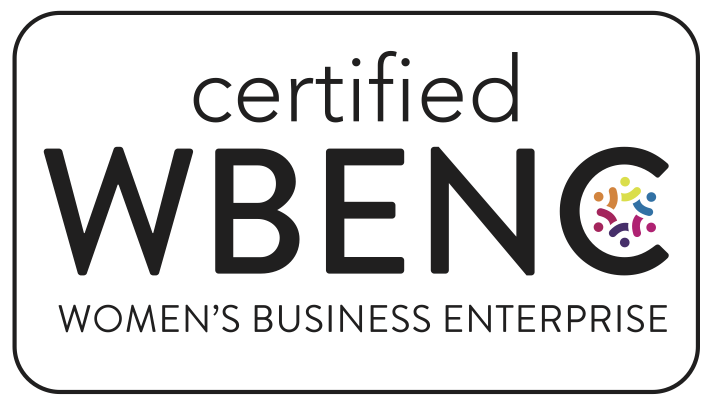Thanks to the COVID-19 pandemic, much of the population has been experiencing skyrocketing stress levels. Social distancing and working from home mean people are getting out less and looking at screens more. With all of these factors taking a toll on people's mental and physical health, some organizations are using wellness challenges to help their teams support each other's well-being and try to rebuild healthy habits that might have been lost in the transition to remote work.
A wellness challenge can take on many shapes and sizes, and what's right for one organization may not be right for another. The approach one company, Service Direct, used to run a successful three-month wellness challenge last summer could serve as a useful starting point for other organizations that want to develop their own programs.
Structure
After establishing a three-month timeline for the Service Direct wellness challenge, the planning team selected daily tasks in three categories and assigned point values to each:
- High impact (3 points): exercising for 30 minutes, digitally detoxing (no screen time) for 4 hours, getting at least 7 hours of sleep, eating at least 3 servings of fruit or vegetables
- Medium impact (2 points): drinking at least 64 ounces of water, sharing gratitude for 3 things
- Low impact (1 point): journaling for 20 minutes, stretching for 20 minutes, meditating for 10 minutes, reading for 30 minutes
An introductory video presented an overview of the program and made it easy for everyone to learn how to participate in it. Weekly updates (via Slack) to the scoreboard kept everyone updated on participants' efforts.
At the end of the challenge, a wrap-up party (held virtually) celebrated everyone's efforts. Branded wellness-challenge t-shirts were mailed to all participants ahead of time so they could wear them on camera at the party, and the top three point getters received wellness-related prizes. Afterward, all participants were asked to complete a survey to help the company measure the program's impact. Overall, the response was very positive, with 100 percent of the participants (who were 70 percent of the company's employees) saying they would likely participate in a wellness challenge again. All participants also reported that the challenge motivated them to create new healthy habits, and some said that it helped them feel more aware and focused on their wellness. The only criticism was the program was too long, and some participants suggested that a monthly or bi-weekly challenge would be better.
This program succeeded in improving employee wellness partly because it wasn't solely a fitness challenge but focused on overall wellness. In order to avoid narrowly defining wellness as just physical fitness (which can exclude some employees), the program intentionally featured a wide range of activities to include physical exercise, mental fitness, and emotional self-care. The biggest positive result of the wellness challenge, though, was the sense of community and purpose it fostered as colleagues shared their wellness journeys with each other. Since the end of the wellness challenge, many Service Direct team members have continued sharing their wellness activities in the program's Slack channel. That alone speaks volumes about the value a program like this brings to an organization.
Setting Up a Wellness Challenge
Any business can benefit from running a wellness challenge (whether or not the world is in the middle of a pandemic) as long the program is well planned and well executed. By following these recommendations, program planners can help employees to get the most out of the challenge.
Pick a leader. Right from the start, the program needs to have a go-to person available to answer questions. Knowing who is running the program and where they can turn for help will make employees more likely to participate in it from start to finish.
Select a specific timeframe. People tend to struggle with commitment when a challenge or project is open-ended, which is why work projects tend to have specific deadlines. If a wellness challenge launches with no end date in sight, employees might put off joining until later—or just dismiss the program entirely.
Centralize task management. Making it easy and fun for employees to join and participate in the programs requires coordination and planning—which are made much easier by using one location (such as a shared list or discussion forum, for example) as a place for brainstorming, planning, managing, and delegating tasks. Possible tasks include building a leaderboard, getting budget approval, creating a registration form, determining awards, planning the wrap-up party, and sending out the post-program feedback survey.
Choose a variety of challenge activities. This step can make or break the success of a wellness challenge. Having diverse activity options makes the program more appealing to more people and better supports its ultimate goal: helping everyone feel good, be productive, and grow. Fitness-related activities provide a solid foundation for a wellness challenge, but the program should also include reading, having technology-free time, meeting sleep goals, and other activities that encourage everyone to be more mindful about how they use their time.
Provide a shared tracking environment. The social aspect of a wellness challenge is a big part of what makes it work. People who try to develop new wellness habits on their own often struggle to stick with them. To emphasize the shared effort of a wellness challenge, record participants' activities and track their progress in one digital location (even something as simple a spreadsheet works).
Increasing Participation
First and foremost: don't make participation in a wellness challenge mandatory. After all, someone who doesn't want to do it won't be motivated to engage in activities and make progress—which just defeats the whole purpose of such a program. The following strategies can help make the program more appealing to employees and encourage widespread participation.
Make a bold announcement. People get dozens (or even hundreds) of messages a day—which makes a standard company-wide e-mail likely to escape their notice. The launch of a wellness challenge should be news that no one can miss, so design a compelling announcement and send it out via all of the business's communication channels.
Simplify communication. Make it as easy as possible for participants to find and share information. From the start, keep all communication related to the challenge in one place—such as a dedicated Slack channel or digital document, or (once everyone is back in the office) a tracking station in the break room or other common space. Whatever the setup, it must be simple: making it complicated or frustrating will only cause people to drop out of the program.
Keep the signups open. Don't prevent employees from joining the challenge late! Publicly sharing program updates with the entire organization (not just participants) often elicits "fear of missing out" feelings, and people who didn't show much interest at the start of the challenge sometimes decide to jump in late once they see how much fun it is. Get some friendly competition going. Depending on a company's culture, a little friendly competition can encourage participation. Regular leaderboard updates and reminders about the wrap-up party (and the prizes!) at the end can help keep people motivated and interested. Don't let the competition become cutthroat, though: one key goal of a wellness challenge is to help employees learn to support each other and become a better team.
Host a wrap-up party. This event recognizes and celebrates everyone's efforts and provides an opportunity for them to share what they've learned. A small gift (such as a t-shirt) for each person is a nice way to thank them for participating in the challenge, and prizes for the winners highlight their extra effort.
Give It a Try!
Whether such a program follows the guidelines listed here or goes off in totally different directions doesn't matter as long as it focuses on bringing people together and provides support (and motivation) for them to improve their wellness. Under today's unusual circumstances, a wellness challenge is something that can help people find some much-needed positivity. But remember, the world doesn't need to be stuck in a pandemic to justify the launch of a wellness challenge. There's never a bad time to feel better!

